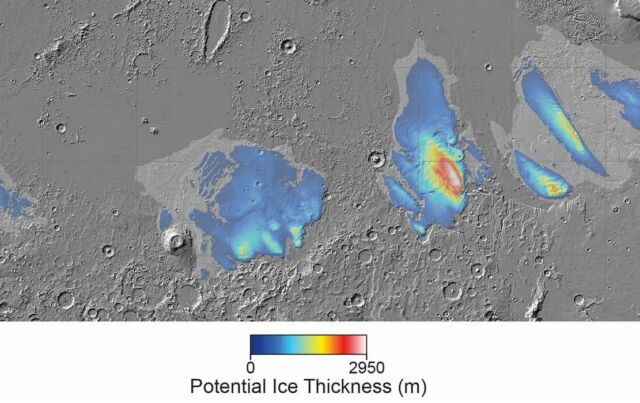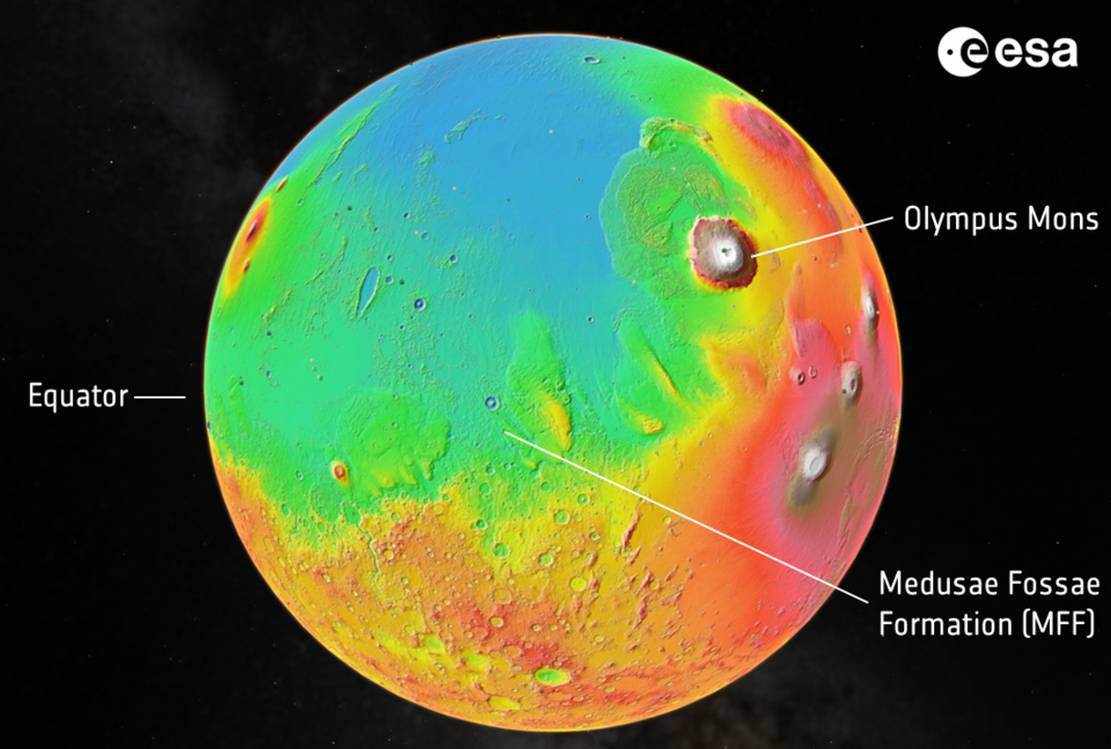Credit ESA
Massive deposits of water ice up to 2.5 km deep may be discovered at Mars‘s Equator.
Recently, the European Space Agency’s (ESA) Mars Express took another look at one of the Red Planet’s intriguing features to figure out what it’s made of.
Turns out, those mysterious piles we saw 15 years ago are layers of water ice stretching deep below the Martian surface.
Back then, Mars Express studied the Medusae Fossae Formation (MFF) and found massive deposits up to 2.5 km deep. However, the composition remained a puzzle until now. The new research indicates that it’s not windswept dust but layers of water ice.
If we could melt all that ice in the MFF, it would create a water layer 1.5 to 2.7 m deep covering the entire planet – the largest amount of water ever identified in this part of Mars. It’s enough water to fill Earth’s Red Sea!
 Credit ESA
Credit ESA
The MFF features are like colossal sculptures shaped by the Martian wind, spanning hundreds of kilometers and reaching several kilometers in height. Situated between the highlands and lowlands of Mars, these formations might be the largest source of dust on the planet, making them a significant and extensive deposit.
Thomas Watters of the Smithsonian Institution, USA, lead author of both the new research and the initial 2007 study, explains:
“We’ve explored the MFF again using newer data from Mars Express’s MARSIS radar, and found the deposits to be even thicker than we thought: up to 3.7 km thick. Excitingly, the radar signals match what we’d expect to see from layered ice, and are similar to the signals we see from Mars’s polar caps, which we know to be very ice rich.”
source ESA



